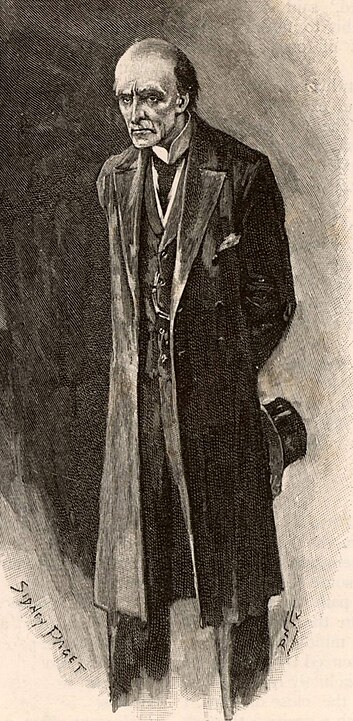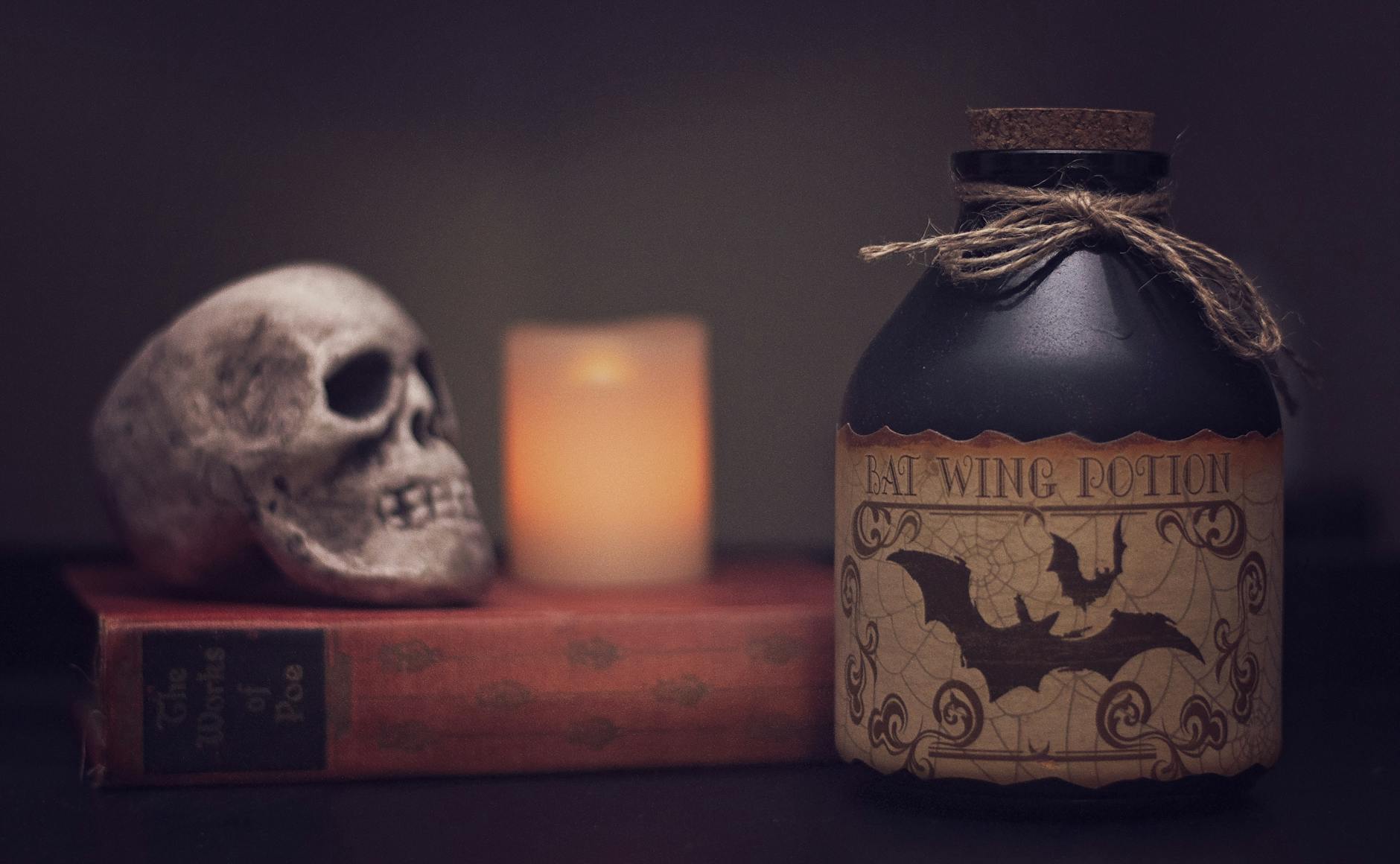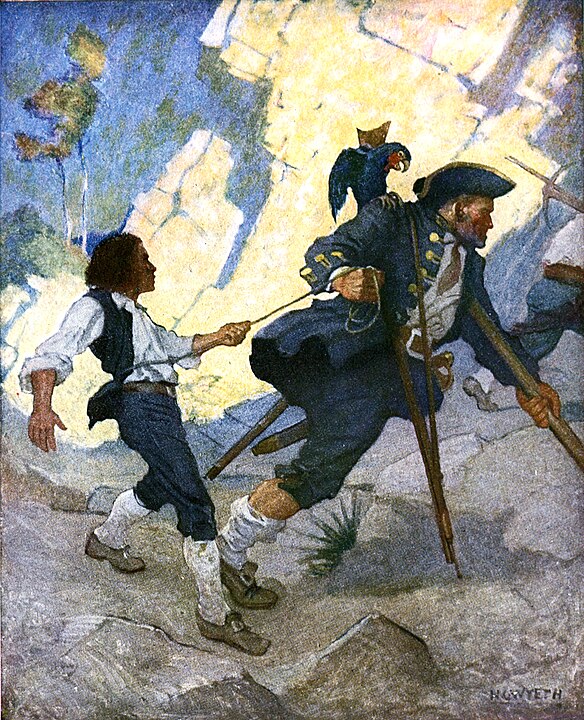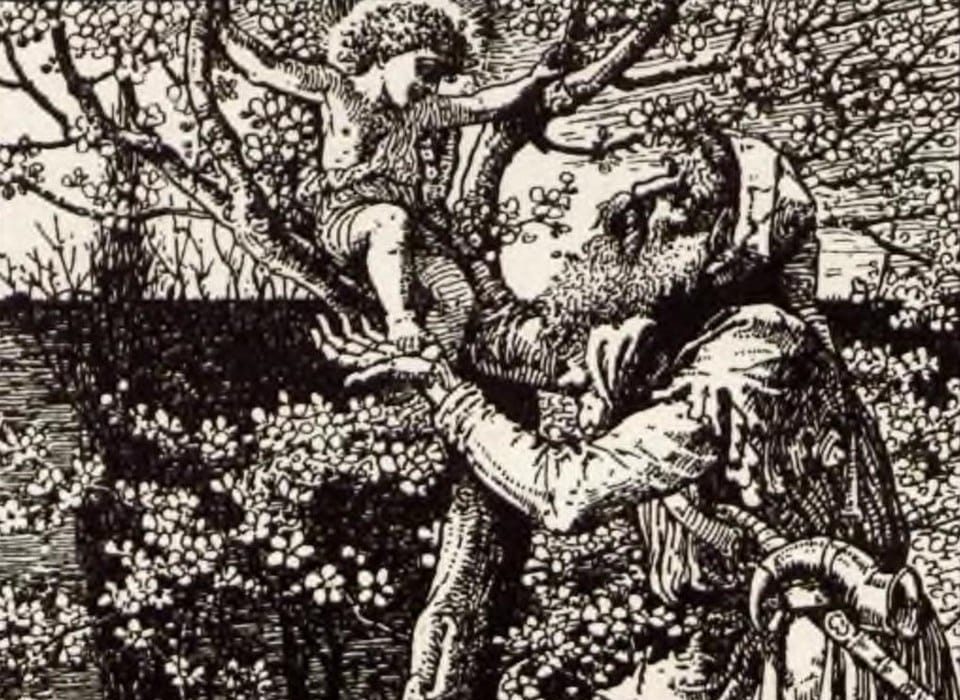There is an old RPG for PC that came out in 1998 called Baldur’s Gate II: Shadows of Amn. It’s an excellent game with great storytelling and atmosphere. It also has one of the best villains of all time: Jon Irenicus. Irenicus is a powerful wizard and hails from Suldanessellar, an elven city. However, after he is cast out of the city by Queen Ellesime for attempting to use their Tree of Life to become a god, he attempts to use a Bhaalspawn in order to harness their divine blood. In viewing Irenicus, we can see how to make a memorable villain.
Irenicus is truly dastardly, plotting, and always a step ahead of the players, as his contemplative actions are intelligent and logical. Even as a player, you have to respect the guy, regardless of his maniacal plans.
So, what makes a memorable villain? It certainly has to do with intellect, but also with a villain’s logical motivations. But, there’s always something more that makes us truly hate a bad guy. So, let us take a look at a few examples. Then, we can see how to make our own memorable villain.
Memorable Villains from Literature
1 . Anton Chigurh from No Country for Old Men
I have discussed this book in detail here, but No Country for Old Men is a cornerstone read for most people. Its antagonist, Anton Chigurh, is an unrelenting monster of a man who uses his morality (chance and the flip of a coin) to dole out the inescapable flight from death (until it doesn’t work out in his favor). What makes him a memorable villain? In the end, he’s kind of right about people trying to escape themselves and win. Lewellyn Moss and Sheriff Ed Tom Bell (protagonists of a like in the novel) ultimately fail and Chigurh comes out the winner (sort of).
As McCarthy writes: “The man stepped away from the vehicle. Chigurh could see the doubt come into his eyes at this bloodstained figure before him but it came too late. He placed his hand on the man’s head like a faith healer. The pneumatic hiss and click of the plunger sounded like a door closing. The man slid soundlessly to the ground, a round hole in his forehead from which the blood
bubbled and ran down into his eyes carrying with it his slowly uncoupling world visible to see. Chigurh wiped his hand with his handkerchief.”
2. Professor Moriarty from Sherlock Holmes
Sherlock Holmes is a genius detective whose extreme intelligence allows him to solve even the most dumbfounding cases. However, he would not be nearly as interesting if it weren’t for a great villain to match wits with time and time again. In other words, it gets to be kind of a bore when Holmes is capable of solving all crime like an Agatha Christie novel, as he often pops out of nowhere to give the reader the rundown of who, what, when, where, and why.

Nevertheless, Professor Moriarty is a memorable villain because he is Holmes’s equal in every way. He has the ability to outwit him and get away with crimes (often times intimidating Holmes). He is also a crime lord who has his hands dipped in many different pies, including as a criminal consult. Such widespread control in a city forces Holmes and Watson to flee where the detective confronts the man in a final one-on-one duel to the death.
As Moriarty states in the short story “The Final Problem”: “It seems a pity, but I have done what I could. I know every move of your game. You can do nothing before Monday. It has been a duel between you and me, Mr. Holmes. You hope to place me in the dock. I tell you that I will never stand in the dock. You hope to beat me. I tell you that you will never beat me. If you are clever enough to bring destruction upon me, rest assured that I shall do as much to you.”
3. Mr. Hyde from The Strange Case of Dr. Jekyll and Mr. Hyde
Mr. Hyde from The Strange Case of Dr. Jekyll and Mr. Hyde by Robert Louis Stevenson is the antithesis of Dr. Jekyll. He is the abomination–the id–who is altogether frightful and callous. A truly insidious creature, Mr. Hyde is capable of great feats of malevolence, such as when he bowls over a child on the street and stampedes them with his own feet. He is a memorable villain if there ever was one.

As Stevenson writes: “Well, sir, the two ran into one another naturally enough at the corner; and then came the horrible part of the thing; for the man trampled calmly over the child’s body and left her screaming on the ground. It sounds nothing to hear, but it was hellish to see. It wasn’t like a man; it was like some damned Juggernaut.”
Mr. Hyde is an excellent villain because he is purely evil. He is selfish, greedy, violent, and crass. He is also Mr. Jekyll, who is none of those things. As such, we the reader have to contend with the good person inside of him (literally), and thus have a point of contention when it comes to deciphering his character. That is to say, he’s not all bad, just outwardly so in all of his actions.
4. Randall Flagg from The Stand
Randall Flagg is the big evil in Stephen King’s universe (along with The King in Yellow). He is both charming and vile, intelligent and rapacious, and he also has many powers that allow him to pursue his desires. In Stephen King’s The Stand, he is doom–seeking the end of the world to fulfill his destiny as king of destruction. Meanwhile, in The Dark Tower series, he is the protagonist Roland Deschain’s archnemesis, trying to outdo him at every turn.
Additionally, in The Stand, Randall Flagg is described as such: “He looks like anybody you see on the street. But when he grins, birds fall dead off telephone lines. When he looks at you a certain way, your prostate goes bad and your urine burns. The grass yellows up and dies where he spits. He’s always outside. He came out of time. He doesn’t know himself.”
What makes him a great villain? He is beyond capable and conniving, and he is quite a character–one moment funny and insightful while the next moment violent and beastly. The contrast allows the reader to see a great deal of depth in his character and personality. Yes, he outwits people all the time, but his frenzy and lust for many things get the better of him.
5. Long John Silver from Treasure Island
In Robert Louis Stevenson’s Treasure Island, Long John Silver is more than just a pirate I wrote about him and his travels extensively in multiple posts. He is a capable man who is vested in finding treasure through his use of manipulation tactics, charisma, and intelligence. He is drawn exceptionally well in Stevenson’s story, and you can appreciate him by the end of the novel, even though he is a murderous cutthroat.

As he is described in the novel: “Aboard ship he carried his crutch by a lanyard round his neck, to have both hands as free as possible. It was something to see him wedge the foot of the crutch against a bulkhead, and propped against it, yielding to every movement of the ship, get on with his cooking like someone safe ashore. Still more strange was it to see him in the heaviest of weather cross the deck. He had a line or two rigged up to help him across the widest spaces—Long John’s earrings, they were called; and he would hand himself from one place to another, now using the crutch, now trailing it alongside by the lanyard, as quickly as another man could walk.”
In such a description, we can see why he is such a great villain. He is determined regardless of what stands in his way. He has lost a leg, and yet he carries himself across the deck of a ship through intelligence and ingenuity. It is actually what makes him a good captain and a good leader. He gets the job done no matter what. That’s both exciting and frightening, as it tells Jim Hawkins exactly how far he will go to get what belongs to him.
Crafting Villains of Your Own
So let us answer the question: how to do we make a memorable villain? From what we have gathered, there are a variety of ways to make a villain in your story compelling.
- Make them dynamic: True villains should be good and bad. They should have many traits, such as intelligence and cruelty. They should also put these traits to use like the aforementioned Long John Silver. After all, he is both smart and cruel.
- They should have motivations: What is the villain’s goal? Randall Flagg wants to destroy the world and be its ruler in The Stand (from my best estimation). That drives him from scene to scene with no question asked.
- They should have morality: Even villains have their own sense of right and wrong. Both Anton Chigurh and Dr. Jekyll have a moral compass. They know what is right and wrong, but they live by their own code. Chigurh is one of fate. Dr. Jekyll is one of science. These moralities guide their interactions and responses.
- They should be plotting: We shouldn’t be bored by a villain. Truly interesting villains are engaging and have interesting backstories. Professor Moriarty acts as Sherlock Holmes’ nemesis and we never have to wonder how that’s the case. He proves it through malice and manipulation.
Conclusion
After taking stock of five different characters, a variety of qualities come up. Anton Chigurh’s unrelenting moralism and behavior is one thing. That is, villains need to believe in something to be menacing. Moreover, villains should be intelligent and use that intelligence for their own gain, like Moriarty.
Additionally, their capability for violence should be high; and how they engage with sin, such as the case with Mr. Hyde. Likewise, they should have a duality about them–they should be capable of humor and destruction, sanity and madness, just like Randall Flag. Lastly, in Long John Silver’s case, villains should be human (at least in characteristics), and should be capable individuals who have clearly fought for their position.
Certainly, you could add countless other characteristics to villains; but here, we have legendary villains with common qualities capable of great harm to the world and those around them.





Leave a comment